Surprisingly Simple Roasted Butternut Squash Soup Recipe
This roasted butternut squash soup is rich, smooth, and slightly sweet, with a hint of warmth from cumin, coriander, and cayenne. The toasted squash seeds add crunch, while fresh parsley and chives bring a bright, herbal finish. Perfect for a cozy day!

The Ultimate Cozy Soup for Chilly Days
Let’s talk comfort food—nothing says autumn quite like a bowl of rich, creamy soup.
Imagine this: the days are getting cooler, sweaters are making their way back to your wardrobe, and you just need something warm and comforting after a long day.
That’s exactly when my roasted butternut squash soup steps in, wraps you in a cozy blanket, and whispers, “I’ve got you.”
What sets it apart is the perfect blend of spices like cumin and cayenne that add warmth and depth without overpowering the natural sweetness of the squash.
Plus, the toasted seeds on top give it a fun, crunchy twist you won’t find in many other recipes.
It’s not just simple; it’s a joy to prepare, with easy-to-find ingredients and a few steps that let you enjoy the process. Cozy comfort food with a little extra flair!
Key Ingredients That Make This Soup Shine
- Butternut Squash – Packed with vitamins A and C, fiber, and antioxidants, it boosts immunity and gives a natural sweetness to the soup.
- Coconut Milk – Adds creamy richness without dairy, perfect for that silky, luxurious texture.
- Toasted Pepitas – Fresh pumpkin seeds lightly toasted for the perfect crunchy garnish loaded with healthy fats and minerals.
Table of Contents
Why You’ll Love This Butternut Squash Soup Recipe

Butternut squash has always been my favorite fall vegetable. Its vibrant orange color, sweet flavor, and silky texture are impossible to resist.
And roasting? Well, roasting takes this humble squash and transforms it into something next-level delicious.
Trust me—I’ve made hundreds of soups in my 30+ years as a chef, and nothing beats a well-crafted roasted butternut squash soup.
Plus, topped with crunchy, golden toasted pepitas? It’s the soup equivalent of adding sprinkles to ice cream.
Deliciously satisfying, wonderfully textured, and a true crowd-pleaser. You’re going to want seconds. Maybe even thirds.
Do I Need to Wash Off the Seeds Before Toasting Them?
It’s a good idea to wash the butternut squash seeds before toasting them.
When you scoop the seeds out of the butternut squash, they might have some of the stringy flesh attached to them.
Rinsing the seeds under cold water helps remove any remaining meat, debris, or dirt.
Cleaning the Seeds
After you’ve separated the seeds from the stringy flesh of the butternut squash, place the seeds in a bowl of water.
Use your fingers to gently rub the seeds together to remove any clinging flesh or debris.
Drain the water and transfer the cleaned seeds to a clean kitchen towel or paper towels. Pat them dry to remove excess moisture.
Once the seeds are cleaned and dried, you can proceed with the toasting process according to the recipe.
This ensures that your toasted butternut squash seeds will be crispy and delicious without unwanted flavors from the stringy flesh.
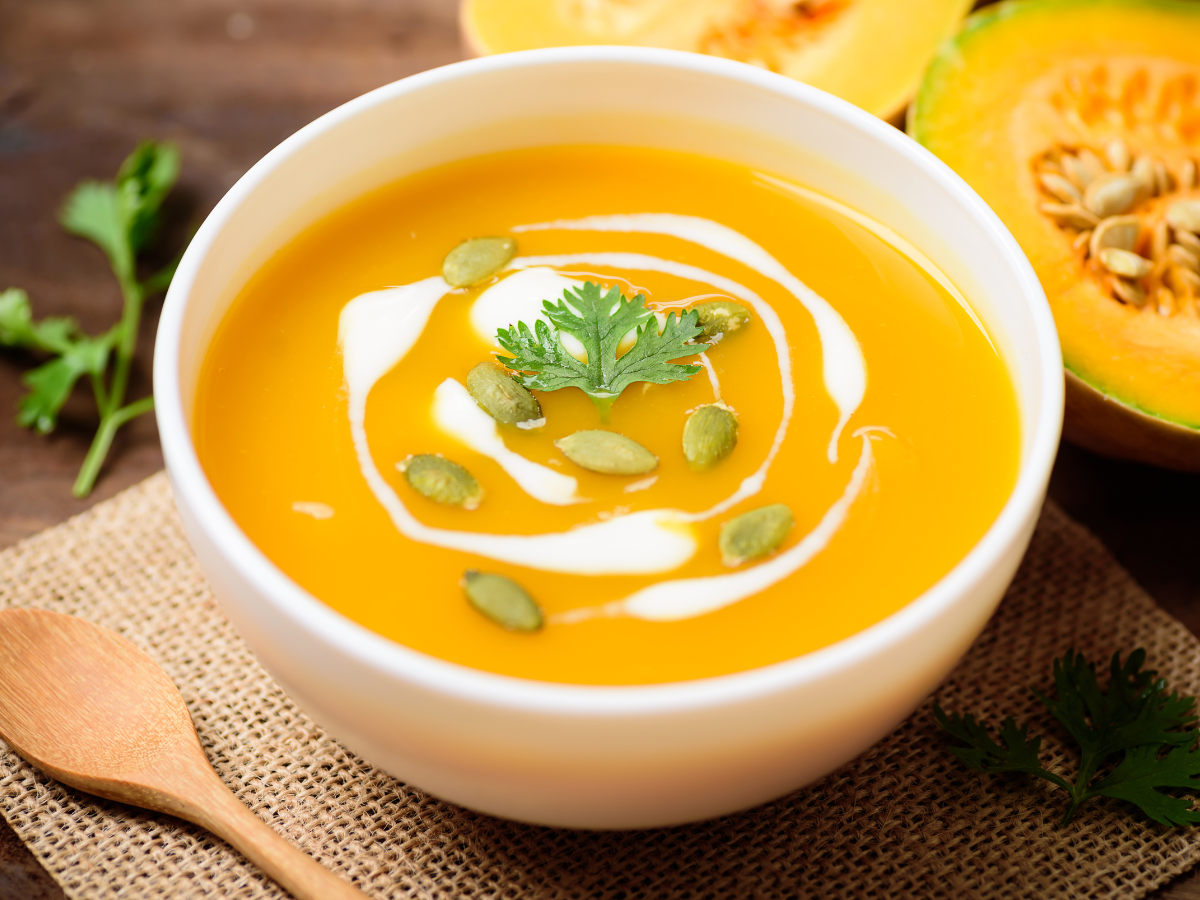
Clever Substitutions to Suit Your Needs:
- Dairy-Free Swap: Replace coconut milk with almond milk or oat milk for a lighter texture.
- Gluten-Free Swap: This recipe is naturally gluten-free, but double-check broth labels for hidden gluten.
- Kid-Friendly Variation: Top with homemade croutons or shredded cheese instead of pepitas to please little eaters.
- No Pepitas? Try sunflower seeds, sliced almonds, or even crunchy chickpeas.
- Pantry-Friendly: Use frozen squash cubes if fresh isn’t available—still delicious!
What Makes This Recipe Better Than the Others?
- Roasted, Not Boiled: Roasting caramelizes the squash, intensifying its flavor and sweetness.
- Perfectly Balanced: Creamy without being heavy, subtly sweet without overwhelming savory notes.
- Healthy & Clean Ingredients: No processed ingredients here, just simple, fresh goodness.
- Texture Contrast: Pepitas add a delightful crunch, elevating each spoonful.
- Chef-Approved: Developed by me, your friendly neighborhood chef with 30+ years of soup-making expertise.
Grab Everything You Need
Before starting this Simple Roasted Butternut Squash Soup Recipe with Toasted Seeds and Fresh Herb Garnish, gather the following tools and equipment:
- Cutting Board and Knife: For peeling, cubing the butternut squash, chopping onions, carrots, and fresh herbs.
- Baking Sheet: To roast the cubed butternut squash and toast the butternut squash seeds.
- Large Pot: For cooking the soup and sautéing the vegetables and spices.
- Immersion Blender or Regular Blender: To blend the soup into a smooth and creamy consistency.
- Mixing Bowls: For tossing the butternut squash seeds with olive oil and seasonings, and for serving the soup.
- Stirring Utensils: Such as wooden spoons or spatulas for stirring the soup and sautéing vegetables.
- Measuring Spoons and Cups: For accurate measurement of ingredients.
- Kitchen Towels or Paper Towels: For patting dry, the cleaned butternut squash seeds.
- Soup Ladle: For serving the soup into bowls.
- Oven Mitts: To handle the hot baking sheet when roasting butternut squash and seeds.
- Colander or Strainer: To rinse and drain the cleaned butternut squash seeds.
- Serving Bowls: For presenting the soup, and individual soup bowls for serving.
Always be cautious and carefully handle hot surfaces and utensils, especially when working with the oven and scalding liquids. Having all your tools and equipment ready before starting the recipe will make the cooking process smoother and more enjoyable.
Elevate Your Roasted Butternut Squash Recipe with Fresh Herbs
Fresh herbs are crucial in elevating this Roasted Butternut Squash Soup Recipe by adding layers of flavor, aroma, and visual appeal. They contribute to a well-rounded and harmonious taste profile that takes the soup from good to outstanding.
1. Aroma and Sensory Experience: Fresh herbs have aromatic compounds that release their fragrant oils when chopped or torn. As you garnish the soup with chopped fresh parsley and chives, their delightful aromas are released, enhancing the overall sensory experience of the dish. The scent of fresh herbs can awaken your appetite and create a sense of anticipation before you even take your first spoonful.
2. Burst of Freshness: The earthy and slightly sweet flavors of butternut squash can be complemented and balanced by the bright, fresh flavors of herbs like parsley and chives. Adding these herbs provides a burst of freshness that cuts through the soup’s richness, making each spoonful feel light and revitalizing.
3. Visual Appeal: Fresh herbs add color and vibrancy to the soup. The vibrant green of parsley and chives against the warm orange hue of the soup creates an inviting and visually appealing presentation. Aesthetically pleasing dishes are often more enticing and memorable, enhancing the overall dining experience.
4. Complexity and Depth: Herbs bring complexity and depth to the dish’s flavor profile. Their nuanced flavors add layers of taste that enhance the overall taste experience. For instance, the mild onion-like flavor of chives and the slightly peppery, earthy notes of parsley contribute to a multi-dimensional taste that engages your palate.
5. Balance and Contrast: Fresh herbs can provide a contrasting element to the creamy and velvety texture of the soup. The crunchy texture of the toasted butternut squash seeds, along with the vibrant, leafy herbs, adds a pleasant contrast that elevates the overall enjoyment of each spoonful.
Pro Tip*
In the “Simple Roasted Butternut Squash Soup Recipe,” the chopped fresh parsley and chives act as the finishing touch, enhancing the flavor profile with their aromatic notes and visually enhancing the dish. Their presence not only adds a layer of complexity but also highlights the care and attention to detail that goes into crafting a well-balanced and satisfying meal.
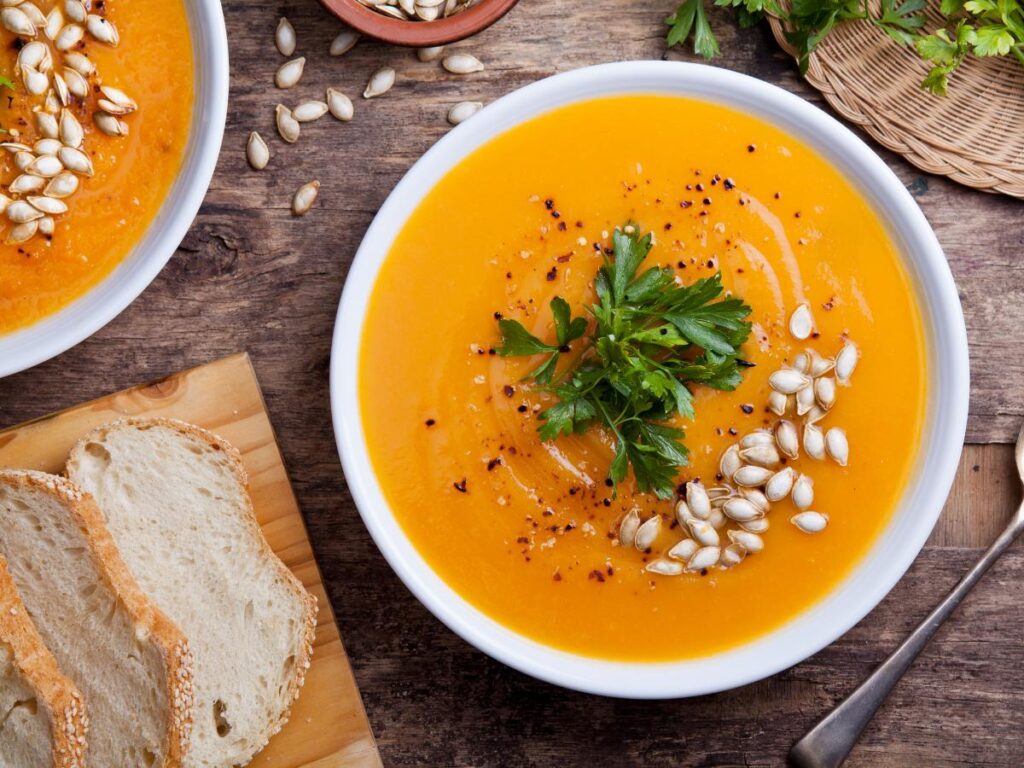
Know Your Veggies

Butternut squash is a highly nutritious and versatile ingredient, making it a perfect choice for fall soup.
1. Nutrient-Rich: Butternut squash is rich in essential nutrients such as vitamins, minerals, and fiber. It’s particularly high in vitamins A and C, both of which are important for immune function, vision, and skin health. Vitamin A, in the form of beta-carotene, gives butternut squash its vibrant orange color.
2. Low in Calories: Butternut squash is relatively low in calories while being filling and satisfying. This makes it a great choice for those looking to enjoy a hearty and nutritious meal without consuming excessive calories.
3. High in Fiber: Fiber is important for digestive health and can help you feel fuller for longer. Butternut squash contains both soluble and insoluble fiber, which can contribute to a healthy gut and regular bowel movements.
4. Antioxidant Content: Butternut squash is packed with antioxidants like beta-carotene, which helps neutralize harmful free radicals in the body. Antioxidants play a role in reducing the risk of chronic diseases and supporting overall health.
5. Immune Support: The vitamins and minerals in butternut squash, particularly vitamin A and vitamin C, contribute to a strong immune system. As the colder months approach, a fall soup made with butternut squash can be a great way to support your immune health.
6. Comforting and Warming: Fall is a season of cooler temperatures, and comforting foods like soups are perfect for providing warmth and nourishment. Butternut squash soup is satisfying and soothing, making it an ideal choice for fall comfort food.
7. Seasonal and Local: Eating foods that are in season and locally available can have environmental and nutritional benefits. Butternut squash is a fall vegetable often harvested locally during this time of year, ensuring you’re consuming fresh produce at its peak.
8. Versatility: Butternut squash is incredibly versatile in the kitchen. It can be roasted, sautéed, pureed, or used in both savory and sweet dishes. This versatility makes it a great ingredient for creating a variety of fall recipes.
When used in a fall soup recipe, butternut squash adds a creamy and slightly sweet flavor that captures the season’s essence. Its nutritional benefits, comforting taste, and vibrant colors make it an excellent choice for a wholesome and delicious fall soup that nourishes the body and the soul.
Let’s Dive into the Recipe!
This creamy roasted butternut squash soup comes together quickly and effortlessly.
The roasting method brings out amazing flavors, ensuring a silky, delightful bowl every single time.
Serving Suggestions for the Ultimate Experience:
- Perfect Pairings: Serve with crusty bread, a grilled cheese sandwich, or a side salad dressed in tangy vinaigrette.
- How to Serve: Ladle hot soup into warm bowls, garnish generously with pepitas and a drizzle of coconut milk.
- Best Time to Serve: Ideal for lunch, dinner, or even holiday gatherings during fall and winter months.
- Bonus Garnish Idea: Sprinkle a bit of smoked paprika for added depth and color.
Final Thoughts: Cozy Up and Enjoy!
I genuinely hope you adore this creamy roasted butternut squash soup as much as my family does.
Don’t forget to snap a pic and tag me on Instagram, follow me on Facebook, pin your favorites on Pinterest, and subscribe on YouTube.
If you loved this recipe, please leave a 5-star rating—it’s the best way to support my cooking adventures.
Thanks for being here—now go cozy up with some deliciousness!
💾 Love this recipe? Save it for later!
Just click the “Pin Recipe” button right on the recipe card, or use the Pinterest share button in the bottom right corner of your screen.
One quick click, and it’s on your board for next time—easy, right?
Before You Go! More Recipes to Love:
Hearty Chili Recipe
Cooks in 70 minutesDifficulty: Easy, MediumThis soul-warming dish is a delightful blend of rich spices and wholesome ingredients, designed to satisfy your cravings for comfort and taste. Let the aroma of simmering spices fill your kitchen and your heart as you dive into a bowl of pure, cozy perfection.
The Perfect Potato Leek Soup Recipe
Cooks in 70 minutesThis Potato Leek Soup is a velvety, comforting blend of creamy Yukon Gold potatoes, sweet leeks, and a hint of garlic. The flavors are balanced with a touch of thyme, a splash of white wine for brightness, and finished with a swirl of rich cream. It’s hearty, flavorful, and perfect for a cozy meal.
Creamy Roasted Cauliflower Soup
Cooks in 70 minutesThis creamy roasted cauliflower soup is rich, velvety, and full of flavor, featuring tender roasted cauliflower blended with savory garlic and onions, a hint of smoky paprika, and a swirl of coconut milk or cream. The result is a comforting bowl with a smooth texture and a perfectly balanced, slightly nutty flavor that’s both light and satisfying.
FAQs About This Roasted Butternut Squash Soup Recipe
Can I freeze roasted butternut squash soup?
Absolutely! Freeze soup (without garnish) in airtight containers for up to 3 months. Reheat gently on the stove, adding a splash of broth if needed.
What if I don’t have an immersion blender?
No worries—carefully transfer soup to a regular blender in batches, blend until smooth, then return to pot.
Can I make it spicier?
Of course! A dash of cayenne or smoked paprika adds a beautiful heat and smokiness.
Can I use store-bought roasted butternut squash?
Definitely, but roasting fresh squash at home yields deeper flavors and a fresher taste.
Now, grab your ingredients, and let’s get cooking!


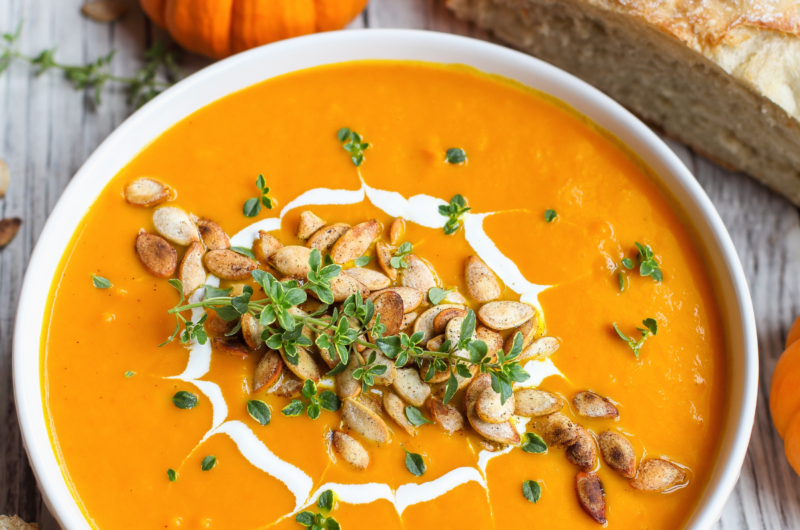
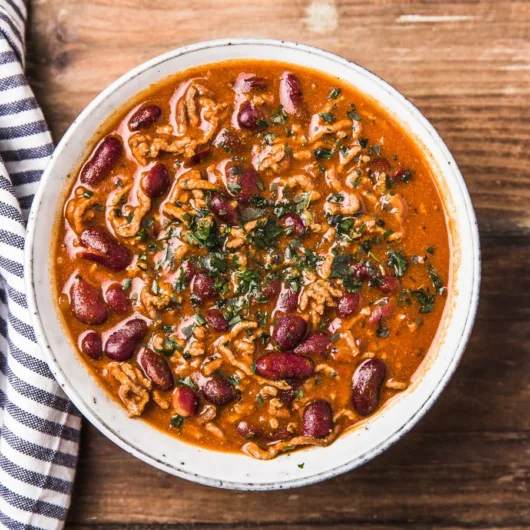
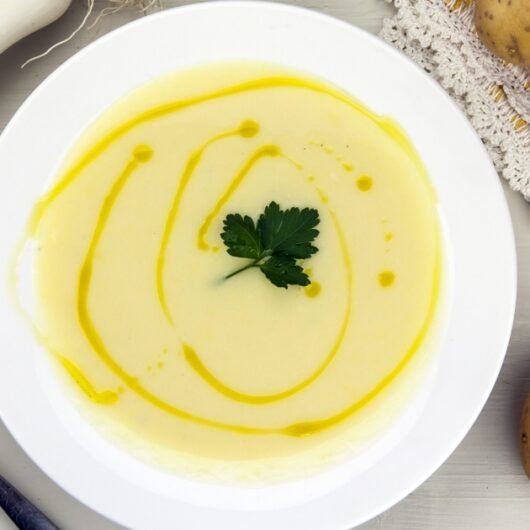
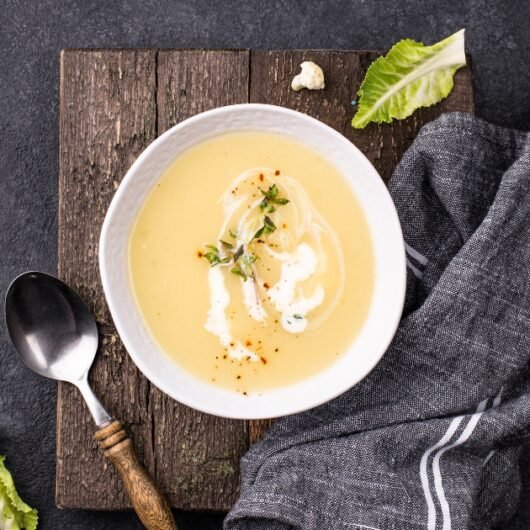






Hi my friend! I wish to say that this article is awesome,
nice written and come with approximately all significant infos.
I’d like to see more posts like this .
It’s a shame you don’t have a donate button! I’d definitely donate to this brilliant blog!
I suppose for now i’ll settle for book-marking and
adding your RSS feed to my Google account. I look forward to new updates and will talk about this website with my
Facebook group. Chat soon!